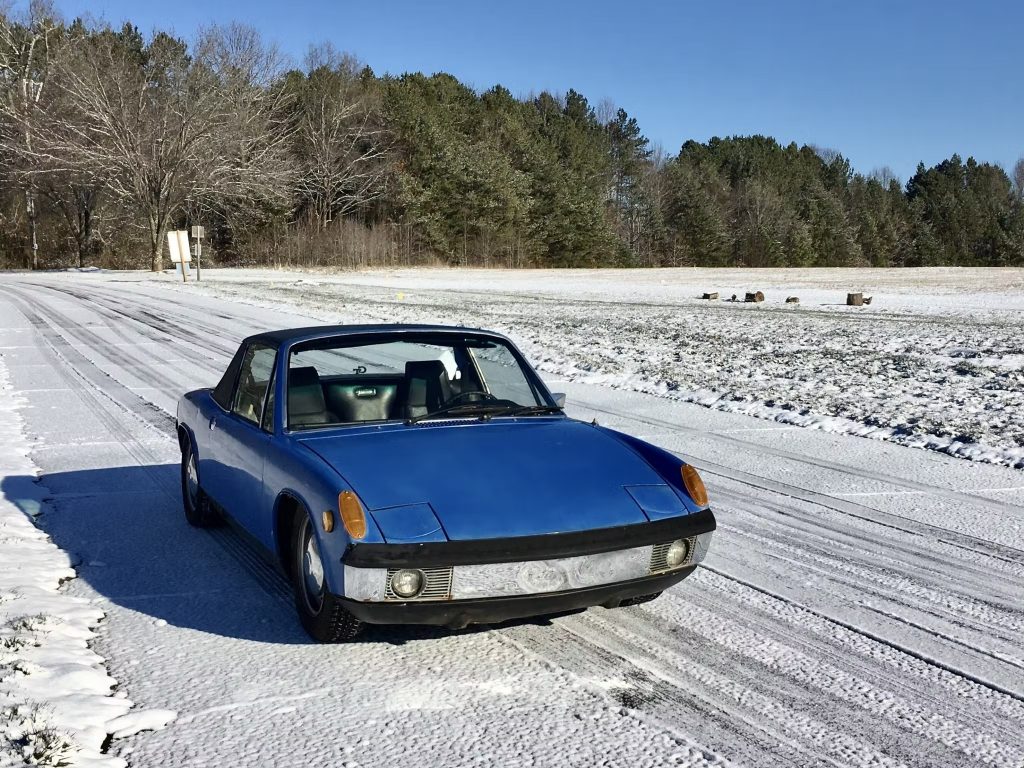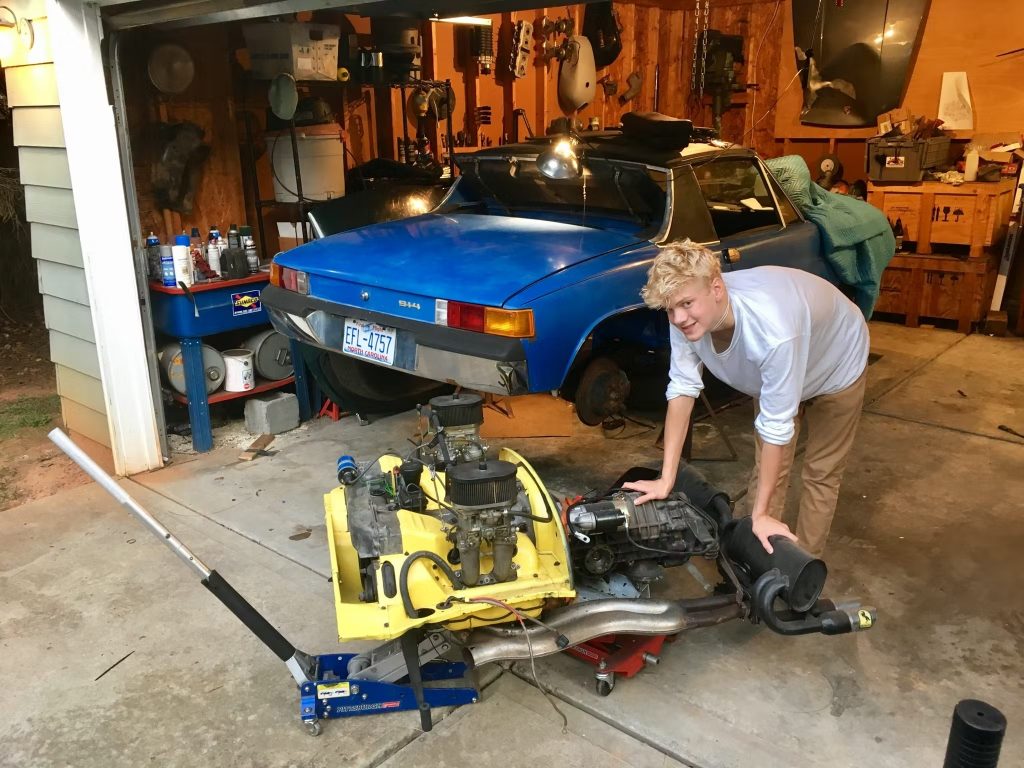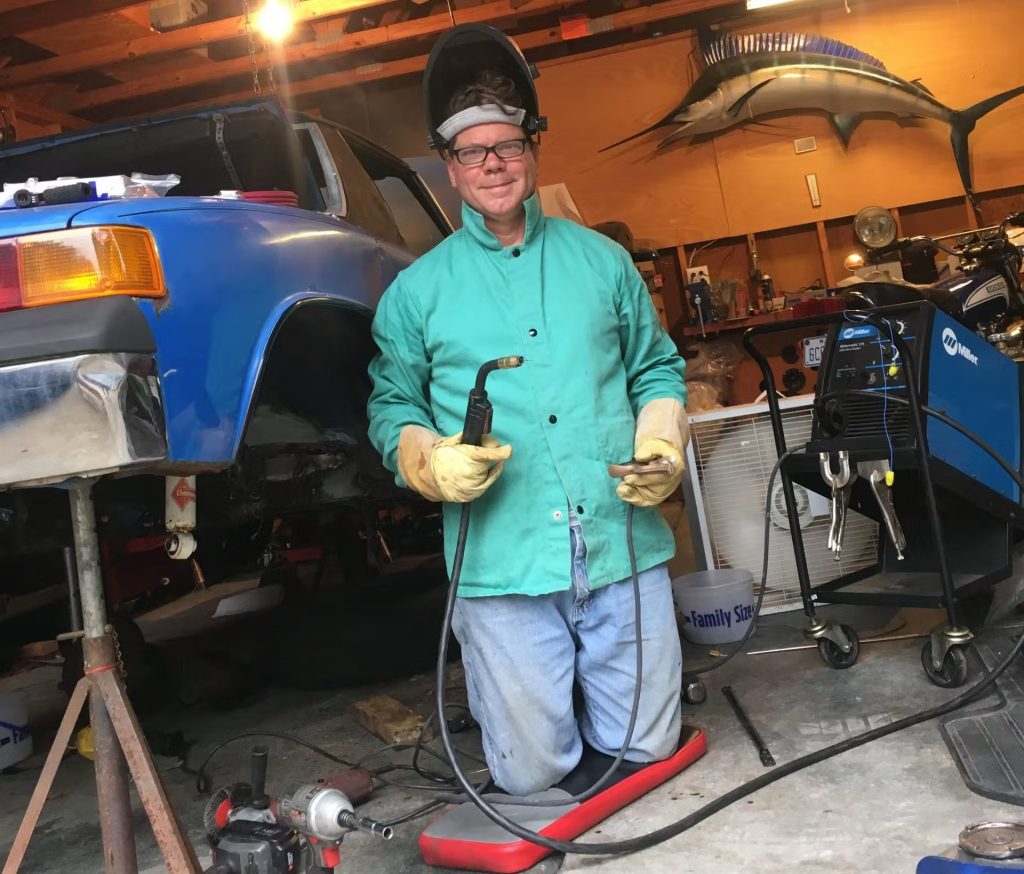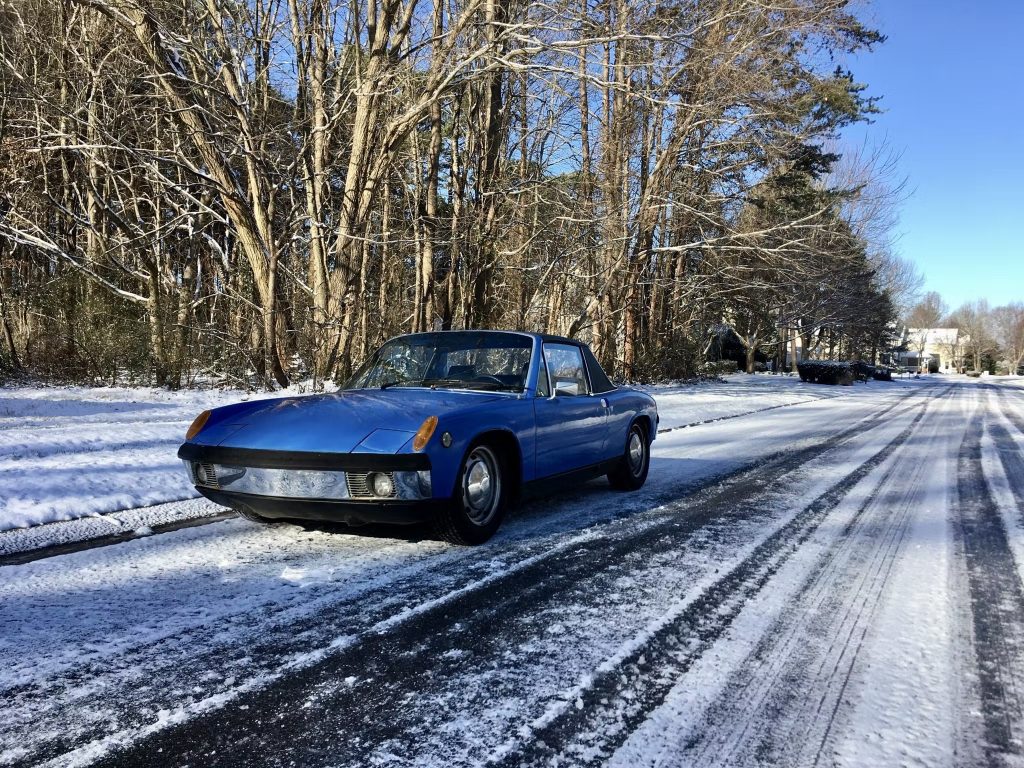Editor’s note: Our good friends across the pond at Hagerty US published this story, by Norman Garrett, and we thought you’d enjoy it. So enjoy! James Mills
Dear Thief,
Welcome to my Porsche 914. I imagine that at this point (having found the door unlocked) your intention is to steal my car. Don’t be encouraged by this; the lock tumblers sheared off in 1978. I would have locked it up if I could, so don’t think you’re too clever or that I’m too lazy. However, now that you’re in the car, there are a few things you’re going to need to know. First, the battery is disconnected, so slide-hammering my ignition switch is not your first step. I leave the battery disconnected, not to foil hoodlums such as yourself, but because there is a mysterious current drain from the 40-year-old German wiring harness that I can’t locate and/or fix. So, connect the battery first. Good luck finding the engine cover release. Or the engine, for that matter.
Now, you can skip your slide hammer. The ignition switch’s tumblers are so worn that any flat-headed screwdriver or pair of scissors will do. Don’t tell anyone.
Once you’ve figured that out and try to start the car, you’ll run into some trouble. The car is most likely in reverse gear, given that the parking brake cable froze up sometime during the Carter administration. Since there is not a clutch safety switch on the starting circuit, make sure to press the clutch down before you try to crank the engine. (I don’t want you running into my other car in the driveway.) This is doubly necessary because my starter is too weak to crank the clutch-transmission input shaft assembly with any success.

With the clutch pedal depressed, the engine should turn over fast enough to get things going. But first, you’ll need to press the gas pedal to the floor exactly four times. Not three. Not five. Four. The dual Webers don’t have chokes and you’ll be squirting fuel down the barrels with the accelerator pumps for the necessary priming regime. If you don’t do it right, the car won’t start before the battery gives up the ghost. Consider yourself forewarned.
If you’ve followed along so far, the engine should fire right up. Don’t be fooled – it will die in eight seconds when the priming fuel runs out. Repeat the gas pedal priming procedure, but only pump two times. Deviate from this routine at your own peril.
Now you have the engine running. Make sure the green oil light in the dash goes out. If it does not, you only have about 100 yards to drive before the engine locks up, so be attentive. If all goes well with the oil pressure, you may now attend to the gear shift lever. Some explanation follows.
This is a Porsche 914. It has a mid-engine layout. The transmission is in the far back of the car, and the shift linkage’s main component is a football-field-long steel rod formed loosely in the shape of your lower intestine. Manipulating the gear shift lever will deliver vague suggestions to this rod, which, in turn, will tickle small parts deep within the dark bowels of the transaxle case. It is akin to hitting a bag of gears with a stick, hopefully finding one that works.
If you are successful in finding first gear (there is a shift pattern printed on the knob; they say German engineers don’t have a sense of humor), congratulations. You may launch the vehicle into motion.

Do not become emboldened by your progress, as you will quickly need to shift to another gear. Ouija boards are more communicative than the shift knob you will be trusting to aid your efforts. Depress the clutch as you would in any car, and pull the knob from its secure location out of first gear. Now you will become adrift in the zone known to early Porsche owners as “Neverland” and your quest will be to find second gear. Prepare yourself for a ten-second-or-so adventure. Do not go straight forward with the shift knob, as you will only find Reverse waiting there to mock you with a shriek of high-speed gear teeth machining themselves into round cylinders. Should you hear this noise, retreat immediately to the only easy spot to find in this transmission: neutral. This is a safe place, no real damage can occur here, but alas, no forward motion will happen either. From this harbour of peace, you can re-attempt to find second, but you may just want to go for any “port in a storm”, given that the traffic behind you is now cheering you on in your quest with vigorous horn-honks of support and encouragement. Most 914 owners at this point pull over to the side of the road and feign answering a mobile phone call to a) avoid further humiliation; b) allow traffic to pass; and c) gather the courage for another first gear start. You may choose to do likewise.
If you press onward without taking a break, you may re-enter first. This is how the car mocks you for your lack of skill, but sometimes it is the only path forward. Once you are ready to again try for second, I can offer some advice. One trick that works is to declutch the transmission, pull the lever from the first-gear position, enter into the aforementioned neutral zone, and then rapidly wig-wag the shift knob side-to-side along a lateral axis. If you move the knob quickly enough, the transmission will be out-smarted and cannot anticipate your next move. It is at this time that you should re-attempt to enter second, and most likely you will do so. Surprise is your best weapon against this transmission.
The move to third should be straightforward, as it’s the only easily-accessible gear in the set. You should now be out of my neighborhood and on the main four-lane road. Third gear will be good for 45 mph, so I would advise you just staying there. Trying to get to fourth gear will only frustrate you and your nearby drivers (see: first-to-second shift).

You don’t need to check for fuel in the car. It will be full, even though the fuel gauge reads zero. The odometer reads ‘0’, not because it was reset when I filled the tank, but because it is just broken. Ignore it. If it is night, and it most likely will be, you will need to turn on the lights. I’ll leave it to you to find the switch since I’ve helped a lot so far. Suffice to say that once you get them active, you will find that the seven inch sealed beams from 1971 will only illuminate sufficient roadway for travel below 45 mph. Since you are still in third , this shouldn’t be a problem. Oh, and the lights only work on high beam, so ignore the flashing lights and vulgar gestures from opposing traffic.
By now you’ve certainly noticed the smell. That is the aroma of Mobil 1 oil being boiled off of long sections of horizontal exhaust pipes, which were cleverly encased by the factory with a second shroud of oil-holding chambers. They filled with oil during my last drive and you are now operating a small thermal refinery that is making light short-chained vaporous hydrocarbons from what was once $8-a-quart oil. They are being conveniently routed to the cabin through carefully formed channels in the heating system, plus the rust holes in the floor provided by Mother Nature herself over the past few decades.
You’ll feel less dizzy if you open a window. But mind that driver’s window does not work, so you’ll have to lean over and roll down the passenger window half-way. I say half-way in a manner that will become apparent once you try to get the window to go all the way down, which it will refuse to do. Instead, simply open the driver’s door slightly and drive along, as I do. Once the oil vapors are exhumed from the cabin, you should start to feel a little better. There is a rag behind the driver’s seat that you can use to wipe the oil film off of the inside of the windshield.

Knowing which road you’re probably on by now, you will be hitting stop lights. Try as hard as you can to not bring the 914 to a stop. The brake system is ideal for this situation, being known more as “scrubbers” than “brakes”. Since you can’t effectively stop the car, use this to your advantage and don’t try. Remember: You certainly don’t want to have to go back into first.
If you have made it within sight of the highway entrance, don’t get any ideas. The front right wheel is severely bent and the vibration at velocities above 50 mph will crack the windshield and cause the doors to open by themselves. So stay on the surface streets, stoplights notwithstanding.
It may be at this point that you consider abandoning the car to avoid further calamity. There is an Exxon station right before the freeway entrance. The last guy who stole my 914 used this very spot and it was rather convenient for all concerned parties. I suggest you ditch the car there and scope out a nice, reliable Camry to heist.
Norman Garrett was the Concept Engineer for the original Miata back in his days at Mazda’s Southern California Design Studio. He currently teaches automotive engineering classes at UNC-C’s Motorsports Engineering Department in Charlotte, North Carolina and curates his small collection of dysfunctional automobiles and motorcycles.
Read more
Petition: Bring back TVR
Opinion: Don’t let emotions ruin your next car-buying adventure
Driver error: Buying a BMW M3 E30 on reputation alone was madness










Brilliant!
Been there, but with a Lotus Europa. Also random engine cut out. Once on a level crossing. Such fun.
I drove a 1977 Carerra 2.7 in 1982. The owner said it was the best Porsche up until then, and probably the best there will ever be. I hated it and have never had the urge to drive, let alone buy, a Porsche since then!
The owner of that Carrera was right, at least in this case, as it was much better than this 914.
Marvellous! Thanks for the sore cheeks 😀 !
Just “perfect” crying with laugher here
Such a walk down memory lane…..As a hard up student living in Moss Side of Manchester in the 80s my ancient Escort had so many ‘quirky’ anti theft devices the only thing that was stolen was the travel clock blu tacked onto the dashboard.
I owned and loved my 914 for 12 years, and there is much that is familiar here. My handbrake worked, but was on the entry sill, and of a puzzling ‘double-pivot, broken handle’ design, so still functioned for anti-theft duties. An additional defence was the way the locking nuts on the clutch cable adjuster would decide to not lock anymore, and render the car sans-clutch until you assumed the required begging position to reach under the rear of the car and adjust them again by hand. My 914 was a great car in many ways, but the greatest thing it ever did was to be worth more money when I sold than when I bought, and now I can have fond memories of classic sports car ownership, without the trials of actually doing it.
Can’t stop laughing, I’m restoring a 914. Never actually driven one before, so I’m going to print this out for my first run out.